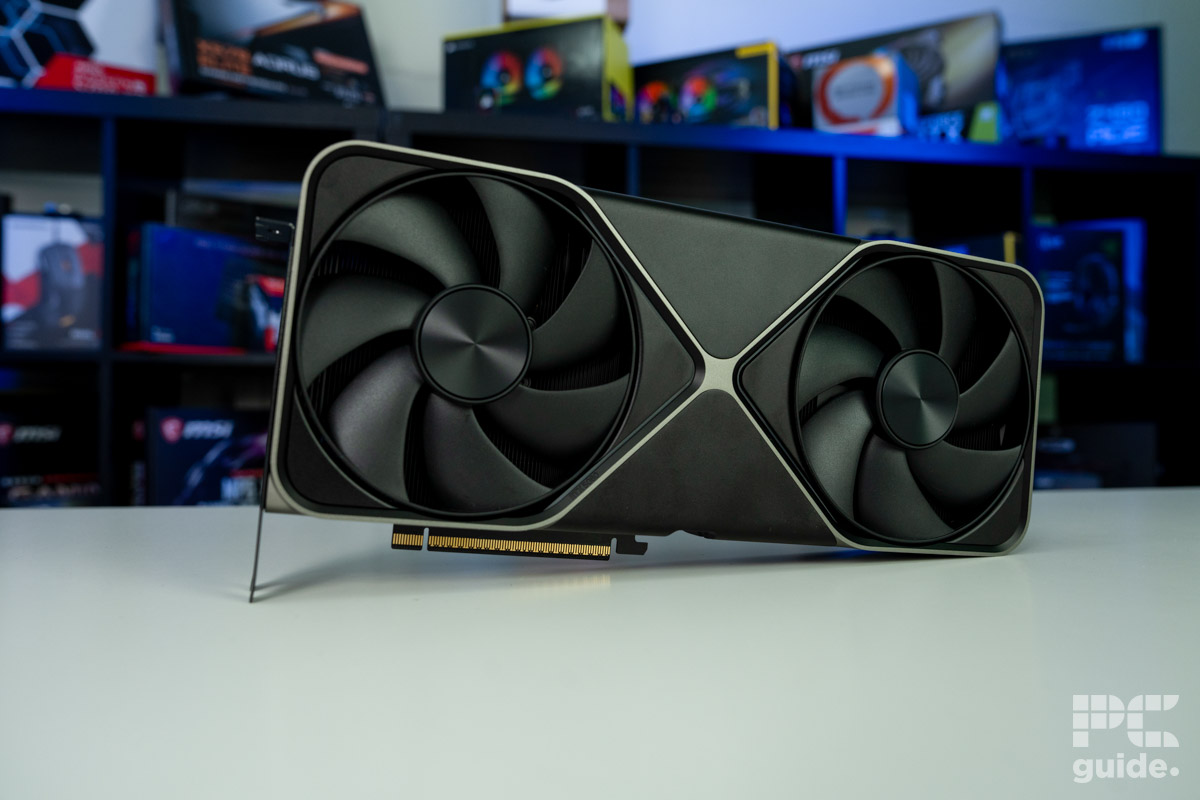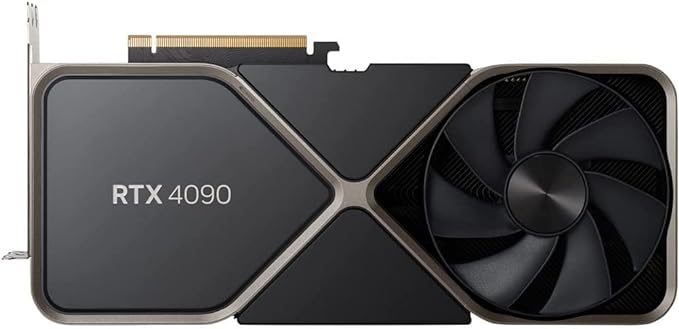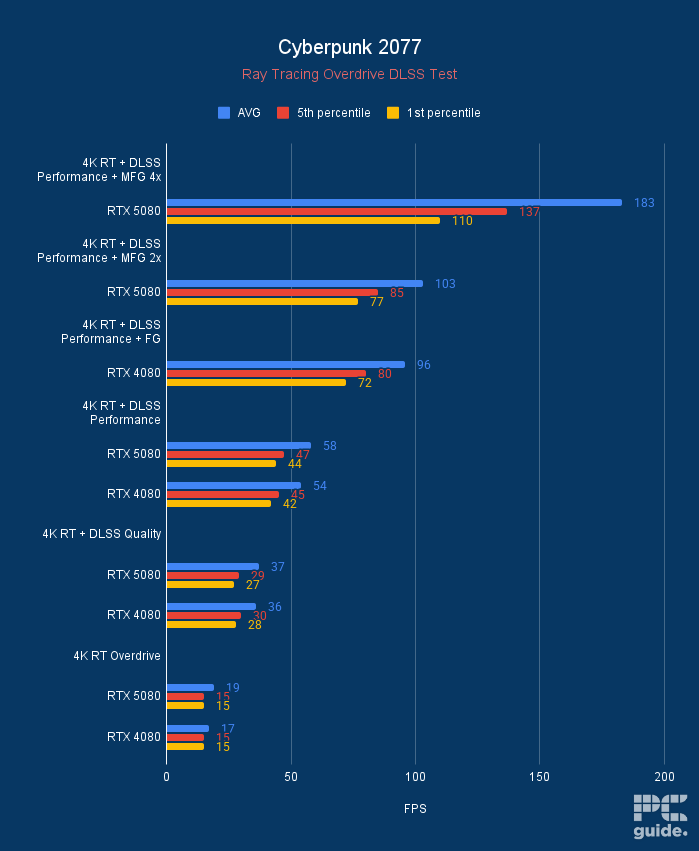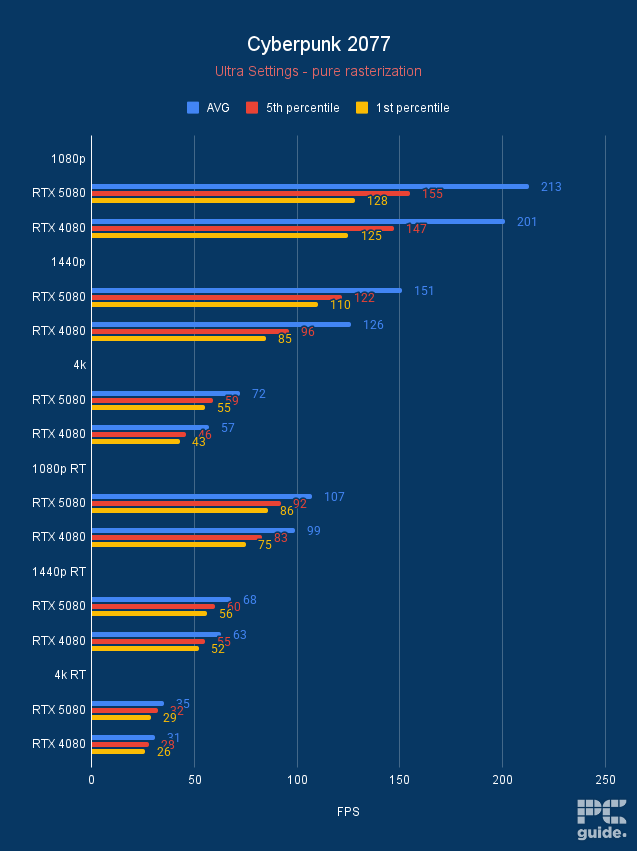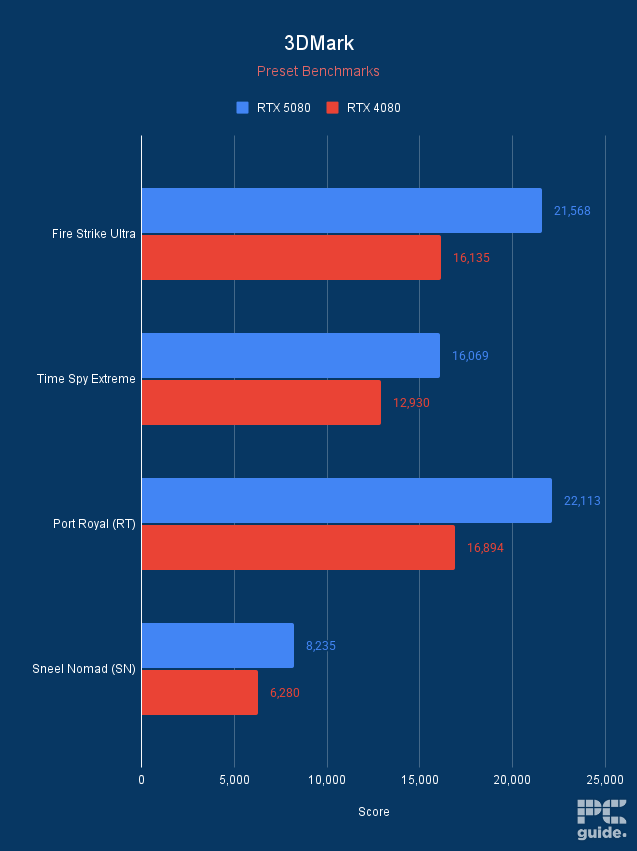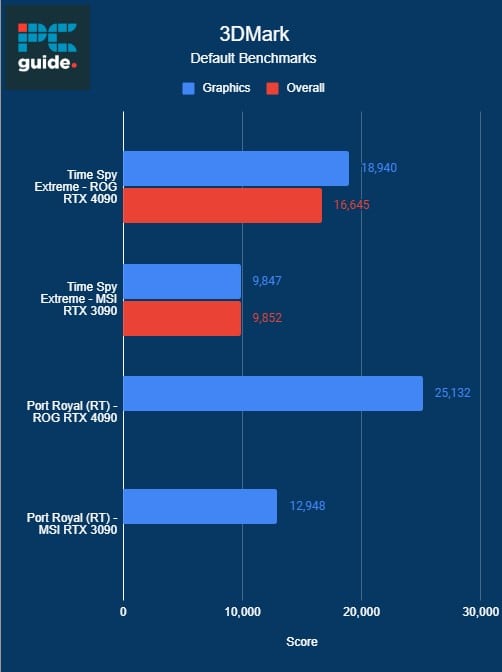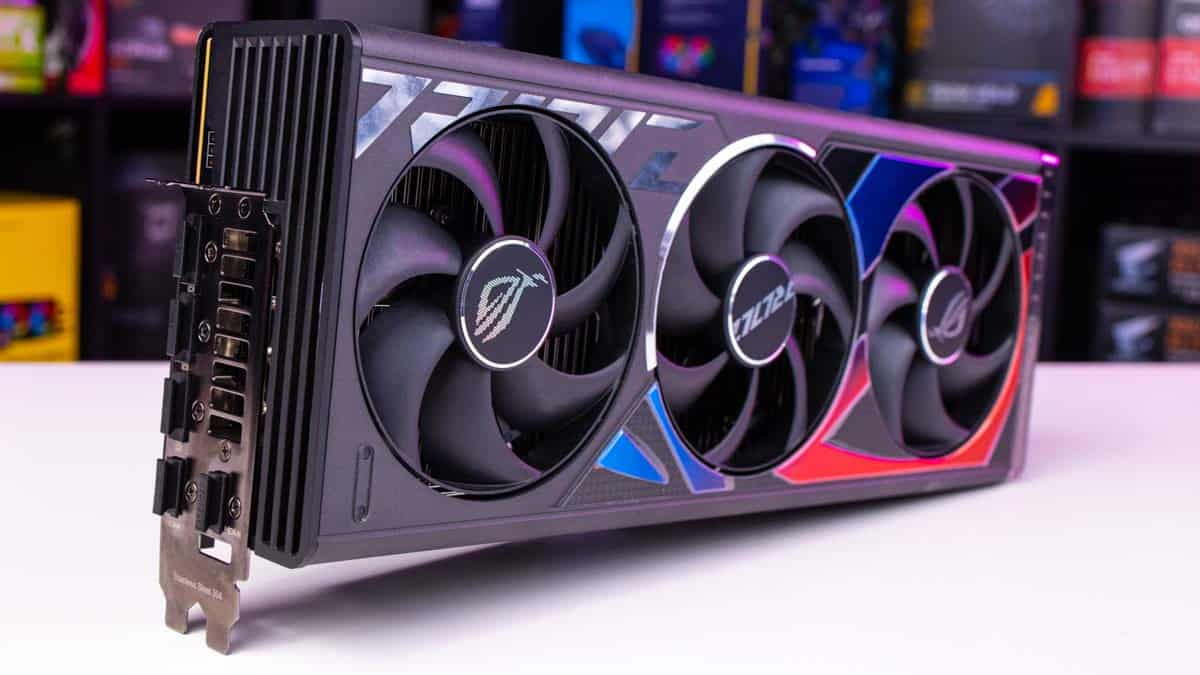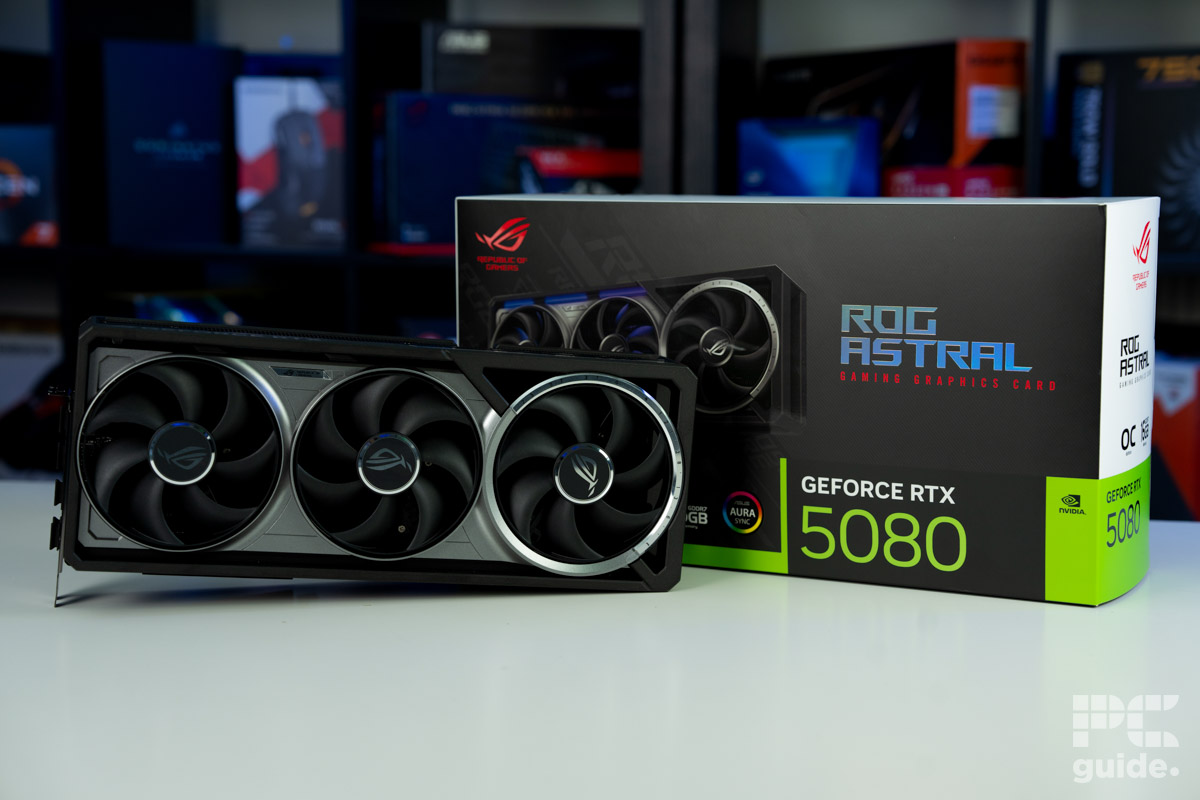RTX 5080 vs RTX 4090 compared – 4090 takes the win, but it’s not a landslide
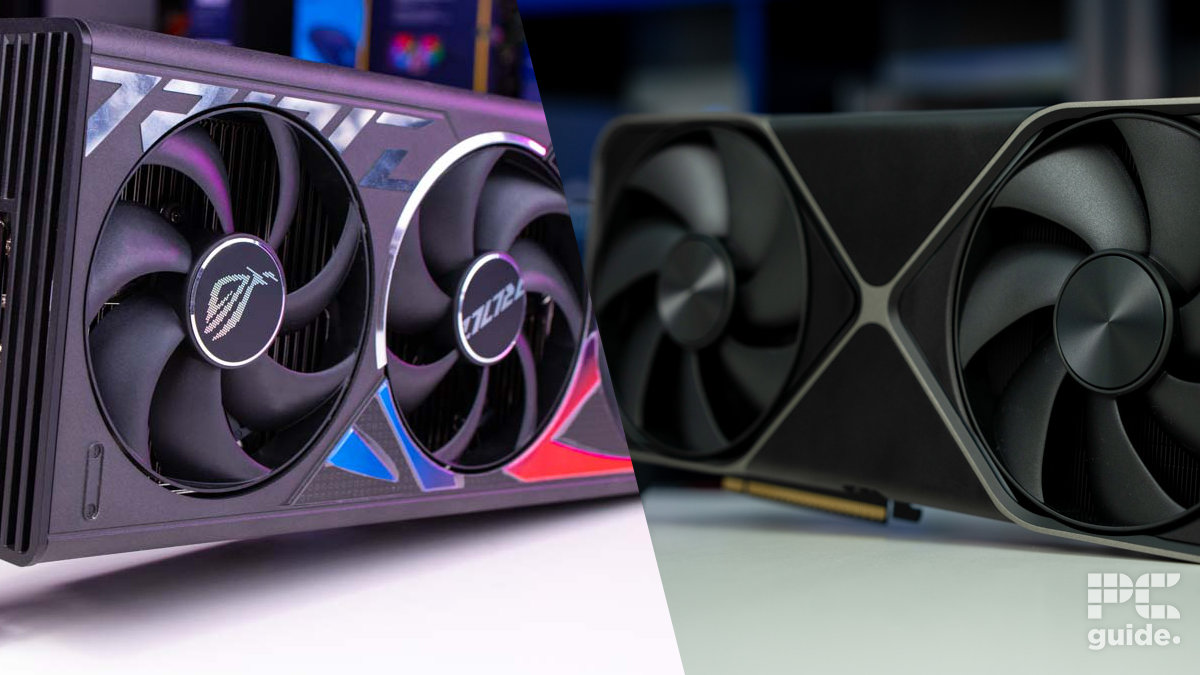
Table of Contents
The RTX 5080 has launched alongside the RTX 5090. Ever since the card was first announced, we’ve wondered how it stacks up against other offerings, especially from Nvidia itself. One of the most obvious comparisons has to be how it fares against the flagship model of the 40-series, the RTX 4090, which was previously the best graphics card but has now been overtaken.
We reviewed and tested the RTX 4090 and found it to be a solid card for 4K gaming. On the other hand, after testing and reviewing the RTX 5080, we were thoroughly impressed by its native and upscaled benchmarks. It also delivered excellent results at 4K and easily outperformed the RTX 4080 in AI and synthetic workflows. So, now that we have both GPUs tested and reviewed, we can stack them against each other and see which one comes out on top.
Prime Day is finally here! Find all the biggest tech and PC deals below.
- Sapphire 11348-03-20G Pulse AMD Radeon™ RX 9070 XT Was $779 Now $739
- AMD Ryzen 7 7800X3D 8-Core, 16-Thread Desktop Processor Was $449 Now $341
- ASUS RTX™ 5060 OC Edition Graphics Card Was $379 Now $339
- LG 77-Inch Class OLED evo AI 4K C5 Series Smart TV Was $3,696 Now $2,796
- Intel® Core™ i7-14700K New Gaming Desktop Was $320.99 Now $274
- Lexar 2TB NM1090 w/HeatSink SSD PCIe Gen5x4 NVMe M.2 Was $281.97 Now $214.98
- Apple Watch Series 10 GPS + Cellular 42mm case Smartwatch Was $499.99 Now $379.99
- ASUS ROG Strix G16 (2025) 16" FHD, RTX 5060 gaming laptop Was $1,499.99 Now $1,274.99
- Apple iPad mini (A17 Pro): Apple Intelligence Was $499.99 Now $379.99
*Prices and savings subject to change. Click through to get the current prices.
RTX 5080 vs RTX 4090 specs comparison
| Specifications | RTX 5080 | RTX 4090 |
| Cores | 10752 | 16384 |
| Base clock speed | 2.30 GHz | 2.23 GHz |
| Boost clock speed | 2.62 GHz | 2.52 GHz |
| Memory | 16GB GDDR7 | 24GB GDDR6X |
| Memory interface | 256-bit | 384-bit |
| Memory clock | 30 Gbps | 21 Gbps |
| Bandwidth | 960.0 GB/s | 1.01 TB/s |
| TDP | 360W | 450W |
| Power connector | 12V-2×6 | 12V-2×6 |
| Measurements | 304 mm x 137 mm x 40 mm | 304 mm x 137 mm x 61 mm |
| Release date | Jan 2025 | Oct 2022 |
While the RTX 5080 is a high-end model in the RTX 50-series lineup, the RTX 4090 is the flagship GPU of the 40-series. So, in terms of specs, the 4090 takes the lead in almost everything, especially the VRAM and core count.
Memory
First, let’s discuss the most important feature: the VRAM. The RTX 5080 comes packed with 16GB of GDDR7 VRAM, while the RTX 4090 offers 24GB of GDDR6X VRAM. In other words, the RTX 5080 is nowhere near the flagship GPU in terms of VRAM.
It does, however, offer a better and faster memory type, GDDR7, which should help it deliver better performance than cards that have 16GB of GDDR6 VRAM. However, 4090 has almost 8GB more, so 5080 won’t be able to keep up with it even with the better memory type and newer architecture. In demanding games that consume a lot of memory, especially at 4K, you’ll be better off with a card like the 4090.
However, with the RTX 5080, we were hoping to see a VRAM upgrade over the 4080, which also offers 16GB of VRAM. This was a bit disappointing considering its competitor, AMD, is introducing this much VRAM in its mid-range options, whereas the RTX 5080 is a high-end model. Even Intel seems to be going in the right direction, as their budget GPUs now offer 10 and 12GB VRAM. For the RTX 5080, we expected at least 20GB of VRAM.
Cores
When it comes to the CUDA cores, the RTX 5080 offers 10,752 cores, while the 4090 once again takes the lead with 16,384 cores. This is a difference of 5,632 cores, which is massive.
For those who don’t know, CUDA cores are responsible for processing tasks simultaneously. The more cores a GPU has, the better it will perform in resource-hungry tasks. Even though the RTX 5080 has 4th-generation Ray Tracing cores and 5th-generation Tensor cores, the difference of 5,632 cores won’t allow it to compete with the 4090 in terms of raw performance. While these cores will help it perform significantly better than its predecessor, it just won’t be able to keep up with the flagship GPU.
Clock speeds
As far as the clock speeds are concerned, the RTX 5080 operates at a base frequency of 2.30 GHz and offers a boost frequency of 2.62 GHz. On the other hand, the RTX 4090 has a base clock of 2.23 GHz and a boost clock of 2.52 GHz.
Now, after reading this, you may think that the 5080 is a bit faster than the 4090 in terms of clock speeds. While higher clock speeds do mean that the 5080 can process more data per cycle, it still won’t be able to match the 4090’s performance due to the difference of 5,632 cores between them. So, having slightly higher clock speeds won’t give the 5080 an advantage over the 4090 in any way.
Performance
Now, let’s get down to the performance, which will help you get an idea of how these two compare in different games. The RTX 4090 is the flagship model of the RTX 40-series lineup, and we put it to the test in several games to get an idea of its real-world performance.
To begin with, in Cyberpunk 2077, which is a pretty demanding game, we achieved 135 FPS at 1440p with everything set to Ultra. Even at 4K, the card delivered 74 FPS, but with RT on, the FPS dropped to 43. We then enabled DLSS, which boosted the FPS to 133. On the other hand, in Microsoft Flight Simulator, another resource-hungry title, we got 54 FPS at 4K and around 115 FPS with DLSS enabled.
On the other hand, the RTX 5080 managed 151 FPS at 4K (an 11% increase) and 72 FPS at 4K (only a 2.7% increase). So, at higher resolutions, we can see that the RTX 4090 has an edge, even if it is just by a bit; however, when we consider their price tags, the RTX 5080 is a much better option as it delivers almost the same performance at 4K and better at lower resolutions providing excellent value.
That being said, it gets even better. We enabled DLSS 4 and Multi-Frame Generation to run Cyberpunk 2077 at 4K Ray Traced. The FPS went up from 19 FPS to 183 FPS with MFG set to 4X, which is a difference of 31% compared to what the RTX 4090 could manage with DLSS 3.
When it comes to synthetic performance, we’ll take the results of Port Royal, which tests real-time Ray Tracing performance, and Time Spy Extreme, which measures a GPU’s ability to render 4K frames.
In Port Royal, the RTX 5080 managed 22,113 points, whereas the RTX 4090 got 25,132 points, a 12% performance difference in the 4090’s favor. In the other test, the performance gap increased as the RTX 5080 churned out 16,069 points while the RTX 4090 was 18,940 (a 16% increase). So, what this tells us is that when it comes to professional workflows, the RTX 4090 might still be the better option, which isn’t surprising as it has more CUDA cores and VRAM; however, the RTX 5080 still has better value and can keep up and outperform the RTX 4090 in gaming.
While we didn’t test the RTX 4090’s AI performance, we got the numbers for how the RTX 5080 fared against the RTX 4080. The 5080 had a significantly better half-precision score of 60,909 compared to the 4090’s 52,978 (a difference of 13% percent), meaning the 5080 should be much better at handling intense AI workloads in scenarios where power efficiency is prioritized, like laptops or smartphones, for example.
However, since the RTX 4090 has more hardware while the RTX 5080 has newer Tensor cores (AI), the competition between their AI output might be tough.
Sizing
Nvidia has typically made its GPUs larger with each generation. The RTX 4090 was one of the biggest graphics cards at launch and significantly larger than its predecessor, the RTX 3090. However, while many expected the RTX 50 series to be even bigger, Nvidia has reversed the trend, keeping the latest cards similar in size.
The RTX 4090 measures 304 mm × 137 mm × 61 mm (L×W×H), while the RTX 5080 measures 304 mm × 137 mm × 40 mm. While both GPUs have the same length and width, the RTX 5080 is noticeably thinner. This is because the RTX 4090 is a 3-slot card, whereas the RTX 5080 is a 2-slot card. As a result, it takes up less space on the motherboard, leaving other PCIe slots accessible.
Features
Nvidia has always focused on improving its AI models and features, and it showcased its latest technology during CES 2025 – DLSS 4. DLSS is something most PC enthusiasts are familiar with. Still, for those who don’t know, it is an upscaling technology that uses the power of artificial intelligence to boost FPS in games.
At the moment, RTX 40-series users have DLSS 3.5, they do get to enjoy the DLSS 4 that was released with the 50-series. However, even though they’ll be able to enjoy the newest upscaling technology from Nvidia, they won’t have access to Multi Frame Generation, a feature that will be exclusive to RTX 50-series cards.
Multi Frame Generation is what DLSS 4 is all about, and it is something that helps the 50-series GPUs gain a significant advantage over the 40-series cards. Nvidia shared a video on their YouTube channel to show the difference between DLSS versions, and we were blown away by how amazing DLSS 4 is.
In Cyberpunk 2077, without DLSS, they were getting only 27 FPS. With the help of DLSS 2, they were able to increase it to 71 FPS, which later jumped to 142 FPS with DLSS 3.5, the current version being used. Then we saw DLSS 4, which boosted the number by another 101 FPS, and took it to 243. In other words, it offered double the performance compared to DLSS 3.5.
Nvidia claimed that the RTX 5070 will offer performance similar to the RTX 4090 for just $549. While this sounds too good to be true, users will most likely be able to achieve this with the help of DLSS 4. That’s what we found in our RTX 5070 review, and of course without frame generation, the 5070 doesn’t come close to the 4090’s performance.
Another impressive feature revealed during CES 2025 was Reflex 2, a much better and more advanced version of Reflex 1. While DLSS boosts FPS in games, Reflex helps reduce the overall latency, which makes the gameplay smoother and lag-free. Reflex 2 will now work with a feature called Frame Warp, and together, they’ll help significantly reduce the latency in games.
The image below shows how Reflex 1 reduced the latency to 27 from 56 ms in The Finals. Nvidia then used Reflex 2, which slashed it by half and reduced the latency to only 14 ms, which is pretty impressive. Such features are useful for competitive gamers, who can’t afford to face issues such as lag, ghosting, and stuttering.
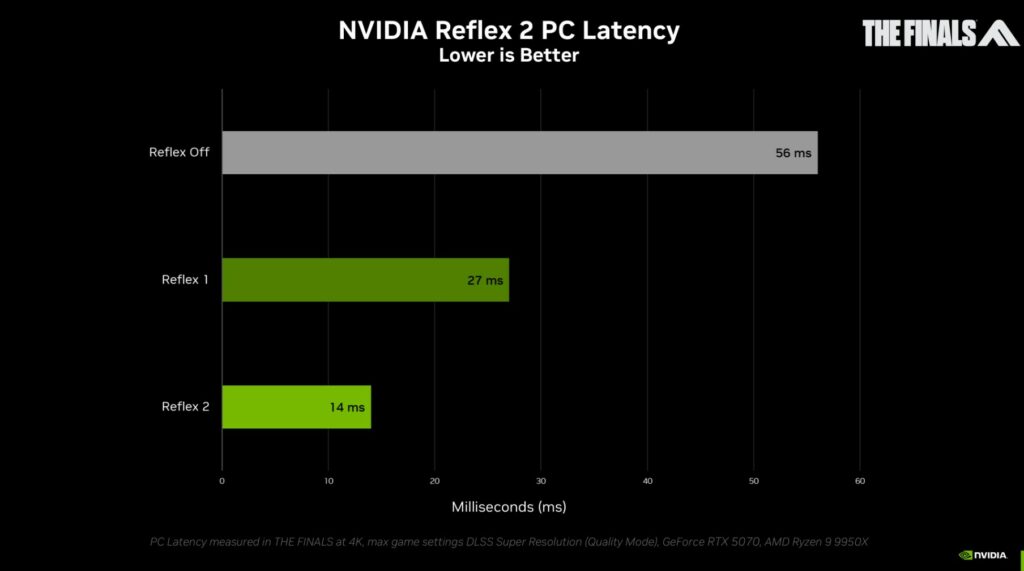
RTX 5080 vs RTX 4090 – price comparison
Nvidia confirmed that the RTX 5080 will launch with a price tag of $999, but do keep in mind that this price is for the base model. Third-party variants will most likely have a price tag of somewhere between $1200 to $1250. However, that’s if you can find it in stock as well, as there seems to be none available, and let alone these cards having a price tag to match the MSRP.
The RTX 4090, on the other hand, had an MSRP of $1,599. However, these days, the models that are even available in stock are found for way above $4,000 on Newegg. So it’s not even a possibility to look to the older cards to get a good price and stock, as hardly any high-end Nvidia GPUs are available for close to their MSRP.
FAQs
Is the RTX 5080 better than the 4090?
Head-to-head on pure performance, the RTX 5080 is not better than the RTX 4090. It still doesn’t have what it takes to beat out the Ada flagship, so it needs a bit of help to do so, with DLSS 4 and frame generation offering plenty of opportunities to get a better framerate.
Even then, it still lacks the same VRAM amount, and even with an improved generation, the speed doesn’t catch up to the 4090. That means it has a lower memory bandwidth as well. However, it is meant to be cheaper, and a lower TBP might make it more appealing.
Is the RTX 5080 faster than the 4090?
The RTX 5080 does have a higher boost and base clock speed than the RTX 4090. That is by 100 and 70MHz respectively, so it’s not a great deal, and the custom cards will have various overclocks that will change that difference too. So it might come down to the specific model as to the difference between the two is set to.
How much cheaper is the 5080 than the 4090?
The RTX 5080 has an MSRP $600 lower than the 4090. With an MSRP of $999 compared to $1,599, however, you’ll unlikely find either card available for these prices. Instead, you’ll be lucky to find it in stock, let alone at a price close to the MSRP.
Final word
The RTX 5080 is a powerful card that delivers a true 4K gaming experience. It will be superior to its predecessor in most ways, with a better memory type, more CUDA cores, and a new architecture. However, to our surprise, it outperformed the RTX 4090 in some titles while matching it in others, but the difference wasn’t a lot that would make sense for you to invest $2,000 in the 4090.
The RTX 5080 has a special weapon—Multi Frame Generation in DLSS 4. This technology helped it deliver significantly higher FPS than the RTX 4090. This is a great addition, as we’re seeing games come out with Ray Tracing as a requirement, meaning these new GPUs should have an easy time pushing high frames.
-
ASUS ROG Strix RTX 4090 OC
- GPU: AD102
- CUDA cores: 16,384
- VRAM: 24GB GDDR6X
- Memory bus: 384-bit
- Bandwidth: 1,008 GB/sec
- Base clock: 2235 MHz
-
Nvidia GeForce RTX 5080 Founders Edition
- GPU: GB203
- CUDA Cores: 10752
- VRAM: 16GB GDDR7
- Memory Bus width: 256 bit
- Base Clock speed: 2295 MHz
- Boost Clock speed: 2617 MHz
-
ROG Astral GeForce RTX 5080 OC
- GPU: GB203
- CUDA Cores: 10,752
- VRAM: 16GB GDDR7
- Memory Bus Width: 256 bit
- Base Clock Speed: 2,295 MHz
- Boost Clock Speed: 2,790 MHz


